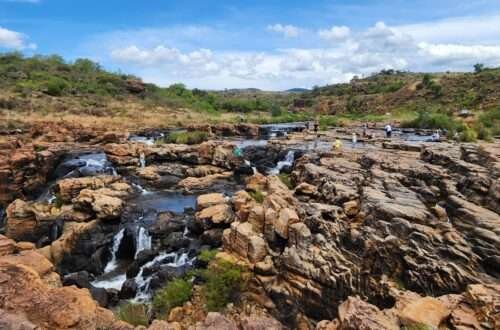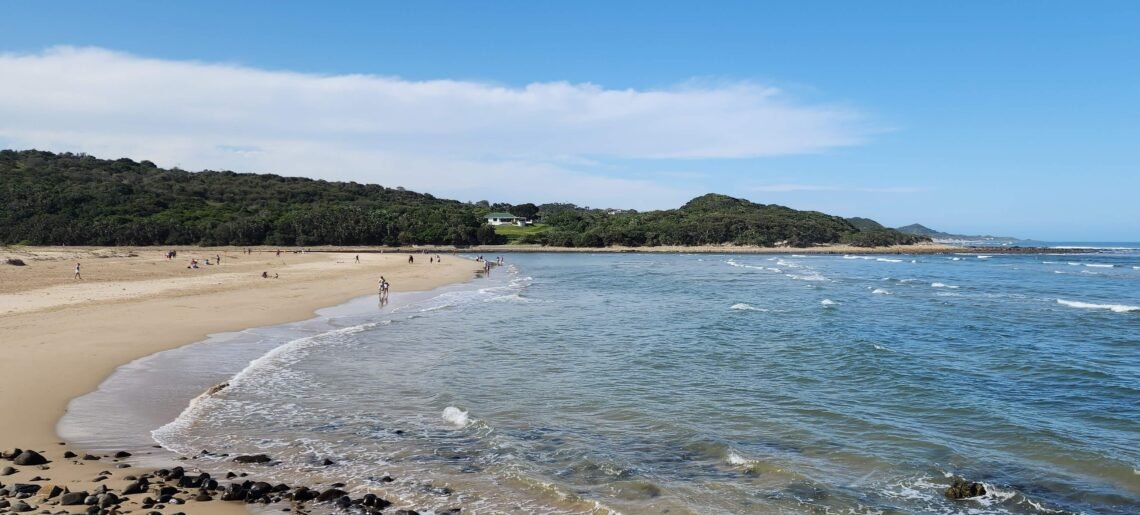
Why East London is South Africa’s most Underrated Coastal Gem
Nestled quietly along South Africa’s southeast coast, East London often escapes immediate notice, overshadowed by more renowned coastal destinations. However, beneath its unassuming exterior lies a treasure trove of natural beauty, cultural richness and exciting adventures. Here’s why East London stands out as South Africa’s underrated coastal gem:
1. Beach Bliss
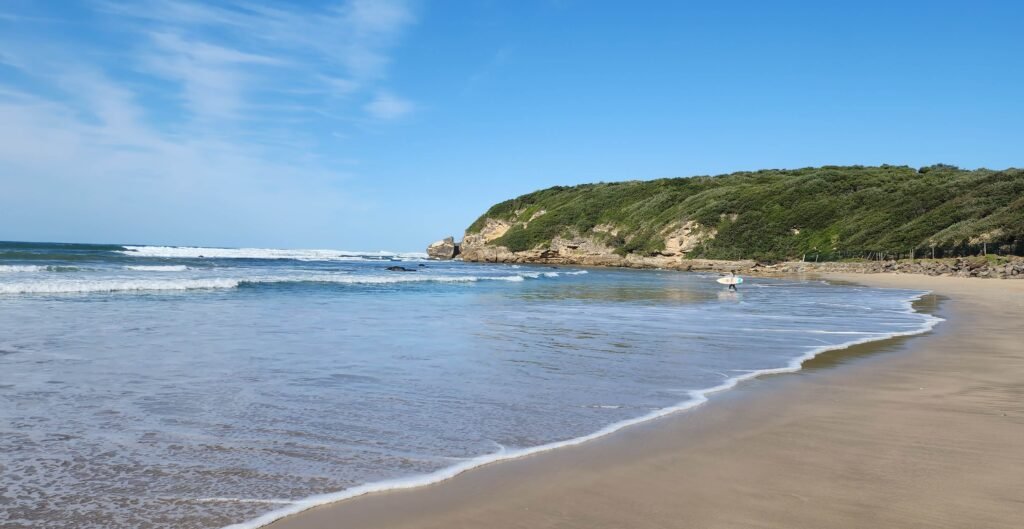
Let’s kick things off with what we all love most about coastal getaways: the beaches! East London is home to some seriously stunning stretches of sand with comfortable water temperatures for swimming. Whether you’re into lazy days soaking up the sun or catching some waves, you’ll find your happy place here. Nahoon Beach is a local favorite, with its golden sands and perfect waves drawing in surfers and beach goers. Another fantastic spot is Gonubie Beach, with its tranquil riverside providing breathtaking scenery and safe swimming. What makes the beaches in East London extra special, though, is that they are not as built-up or crowded as other popular coastal areas. That means when you visit, you often get to enjoy the beauty without the hustle and bustle of big crowds (outside of the busy December period, that is).
2. Surfing Paradise

For people who love surfing, East London is a great place to check out. If you’ve ever dreamed of riding the perfect wave, this is the place to make it happen. Nahoon Reef is legendary in the surfing world, offering epic swells that’ll have you feeling like a pro in no time. Plus, the surf culture here is super chill, so even if you’re a beginner, you’ll feel right at home in the surfing community.
3. Fisherman’s Playground
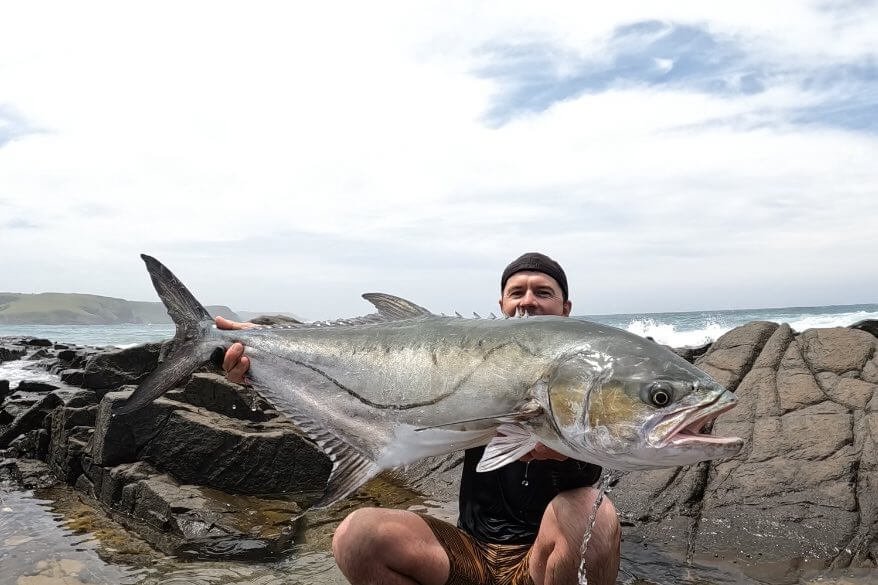
East London is a prime destination for fishing! With its diverse aquatic environments, the region has great opportunities for both freshwater and saltwater fishing. In the local river systems and estuaries, spotted grunter, cob and leervis/garrick are common catches. Anglers also frequently catch kob, rockcod, daggerhead, seabream, red stumpnose, black musselcracker (poenskop), as well as various ray and shark species. What sets fishing in East London apart is not just the abundance of species, though. It is also special for the unspoiled beauty of the surroundings. Unlike more crowded coastal areas, here you can reel in your catch amidst tranquil views, with nothing but the sound of nature to accompany you.
4. Rich Marine Life

The waters surrounding East London are teeming with marine life. From June to October, southern right whales migrate to the warmer waters of East London to mate and calve. Sightings in the region are excellent during this period especially. Humpback whales also pass by from June to November during their yearly migration. But it’s not just whales; dolphins love to frolic in these waters too, adding to the magic of the coastal experience. If you want to see whales and dolphins up close, you can go on a boat tour for a fun and educational experience with Southern Cross Cruises. As the only East London ‘boat based permit holders’ for Whale & Dolphin watching, they are an absolute must-do attraction in the city.
5. Cultural Mosaic and History
The city of East London has a fascinating story to tell. Established in the early 19th century as a trading post, East London has evolved into a vibrant hub of culture and commerce. Its strategic location along the coast made it a vital port for trade and transportation, contributing to its growth and development. The East London Museum is a great place to visit, providing a window into the past and preserving the stories of those who have contributed to shaping the city’s identity.
5.1 Historical Sites in East London
East London has been home to diverse communities, including indigenous Xhosa peoples, British settlers, and immigrant populations, each leaving their mark on the city’s cultural landscape. Today, the city’s historical sites, ranging from colonial-era forts and buildings to museums and monuments, serve as reminders of its complex and multifaceted history. Although there are numerous historical sites to explore, I’ll focus on just two iconic spots in this post.
Cove Rock, a place of ancestral spirits

Gompo Rock, also known as Cove Rock is a natural wonder of two sandstone rocks rising prominently from the sea. The rocks reach a staggering height of 14 meters, with a naturally formed water channel running between them. The site lies 11km west of East London between Hickman’s River and Winterstrand. More than just an awe-inspiring site, though, Cove rock also holds cultural significance to the local Xhosa people, who regard it as a sacred site. The most well-known historical incident linked to the site revolves around the Xhosa prophet Makhanda Nxele whose attempt to summon ancestors from the sea at the rock is an enduring legacy in Xhosa culture.
READ MORE >>> Cove Rock: Tracing the threads of East London’s rich heritage.
Bats Cave, East Londons potential heritage site
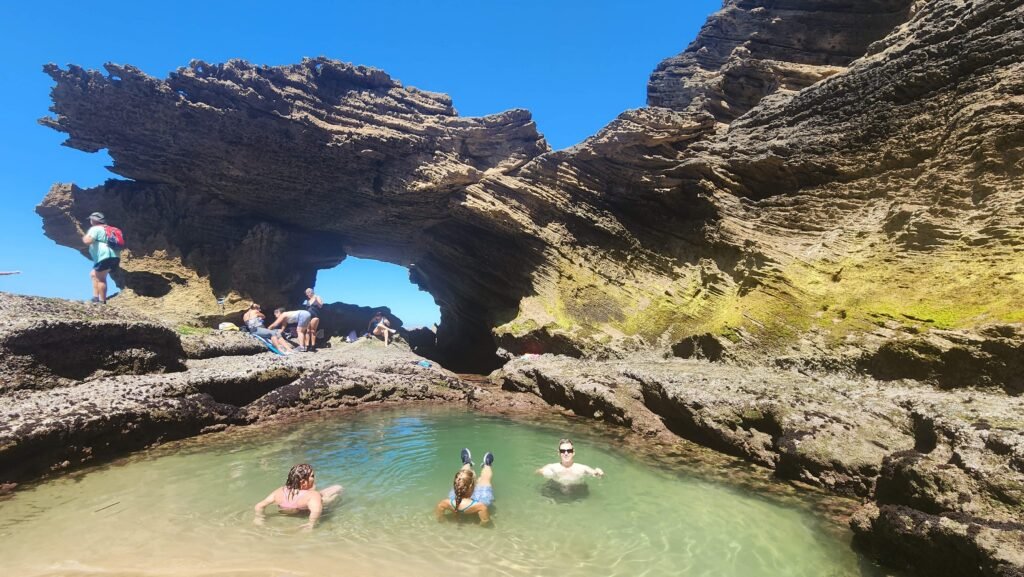
Bats Cave, a scenic spot in Nahoon surrounded by cliffs and a natural pool, is a must-visit. It’s only accessible during low tide and is about 1.1 km from the MBSA Coastal Education and Visitors Centre. Along the way, you’ll pass by the excavation site where the oldest human footprints, dating back 124,000 years, were found in 1964. It’s a fascinating glimpse into our ancient past that’s still being explored today.
Attention!
Bats Cave is currently under review as a potential heritage site to be protected under the Heritage Resources Act 1999. As such, please be mindful when visiting here.
Minimize noise: Loud noises can disrupt wildlife and disturb the tranquility of the area. Keep conversations at a respectful volume.
Avoid littering: Preserve the beauty of the site by disposing of trash properly and carrying out any waste you generate.
Leave artifacts undisturbed: Refrain from touching or removing any objects you may come across. These items contribute to the historical value of the site and should be left for others to appreciate.
Read more >>> Bats Cave, East London: How to visit this secret destination
6. An active running scene

East London has a vibrant running scene, with several local clubs such as Oxford Striders and the East London Running Club providing training programs to help you improve running distances and times. The Surfers Challenge in East London is a well-known annual event that attracts hundreds of runners. The gruelling 17.5km race, mostly across sandy beaches, starts at the Kwelera River Mouth, and ends at Nahoon beach. With running in East London, you generally have uncrowded streets with fantastic views to keep you company along the way.
8. Gateway to Adventure on the Wild Coast

East London’s proximity to the Jikeleza Wild Coast is undeniably fantastic for several reasons. Firstly, it grants easy access to the stunning natural landscapes of the wild coast, a rugged and untamed stretch of shoreline dotted with hidden coves, dramatic cliffs, and traditional Xhosa villages. This closeness opens up a wealth of outdoor activities such as hiking, surfing, fishing, and wildlife viewing, providing travelers with endless opportunities for adventure and relaxation. Additionally, the region’s rich biodiversity and cultural heritage offer the chance to immerse yourself in unique experiences, from exploring diverse ecosystems to engaging with vibrant local communities. Ultimately, the combination of natural beauty, outdoor recreation, cultural richness, and easy escape from urban life makes East London’s proximity to the Jikeleza Wild Coast truly remarkable.
Read More >>> Easy-to-Reach Places along the Wild Coast (Jikeleza Route)
9. Coastal Lifestyle

Last but not least, let’s talk about the vibe. East London has that laid-back coastal lifestyle that we all crave. Here, time seems to slow down, giving you the chance to relax, unwind, and soak in the beauty of your surroundings. Whether you’re sipping on a cold drink at a beachside cafe or simply taking in the breathtaking views, you’ll quickly fall in love with the easygoing atmosphere of the city. So, if you’re looking for a coastal getaway that offers more than just sun and sand, look no further than East London, South Africa’s hidden coastal gem waiting to be discovered.
Looking for more things to do in and around East London?




